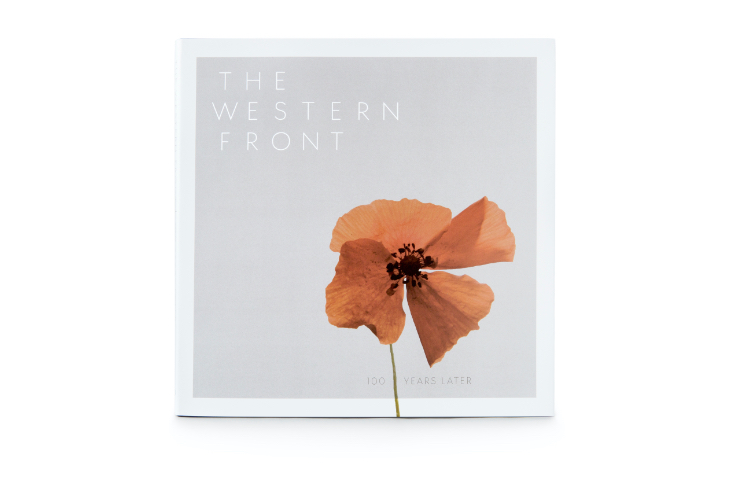
This is the first of an ongoing series of annual fine art books created, designed and produced by UVU’s Art & Design Department. The centennial of the start of World War I provided and opportunity for students, along with faculty, to embark on a study abroad program to WWI’s western front, creating art throughout the journey.

Judy Day

Christina Rogers

Lexi Bills
The genesis of this book was to provide students and faculty from different disciplines within the Art & Design department at Utah Valley University an opportunity to collaborate on a project. The centennial of the start of World War I provided that chance. Students from Photography, Illustration, and Graphic Design, along with faculty advisors, embarked on a three-week study abroad program to travel along the western front from WWI, creating art throughout the journey.
A conflict unlike anything witnessed before in history, World War I came to be known as the Great War or the War to End all Wars. Officially beginning July 28, 1914, one month after the assassination of Austrian Archduke Franz Ferdinand, and concluding on November 11, 1918, with the signing of the Armistice. The war saw the military involvement of 65 million men, 40 countries, and dozens of colonies. It involved more than 2,500 miles of trenches, equating to a soldier for roughly every 4 inches of trench. World War I represents the first time in a major conflict that tanks, flamethrowers, poison gas, submarines, machine guns and aerial warfare were used. Politically, the war changed boundaries, ended three dynasties, and laid the foundation for the world to return to war a mere 21 years later.
For most of us, World War I received only fleeting attention in our educational experiences. It was a topic glanced over between the great calamities of the Civil War and World War II. Yet, while in France, history came alive as we read articles, poems and books about the war, or as we walked through trenches, cemeteries, craters, museums, and monuments. We did not set out to create a history of the war, or to endorse the politics behind it. Rather, we were interested in the millions of people called upon to sacrifice so much for something that so few understood.
We have included a number of poems and writings from firsthand witnesses, as well as insights from the women affected by loss and by the men who walked through the trenches, many of whom never returned. In an attempt to make sense of or cope with the madness that surrounded them, many turned to the pen; others took the very weapons themselves and turned them into souvenirs. It is impossible to understand the life and pain felt by people a century ago, but in one small aspect we could relate; we use the act of creation to try and understand or cope with the world and the experiences we have inherited.